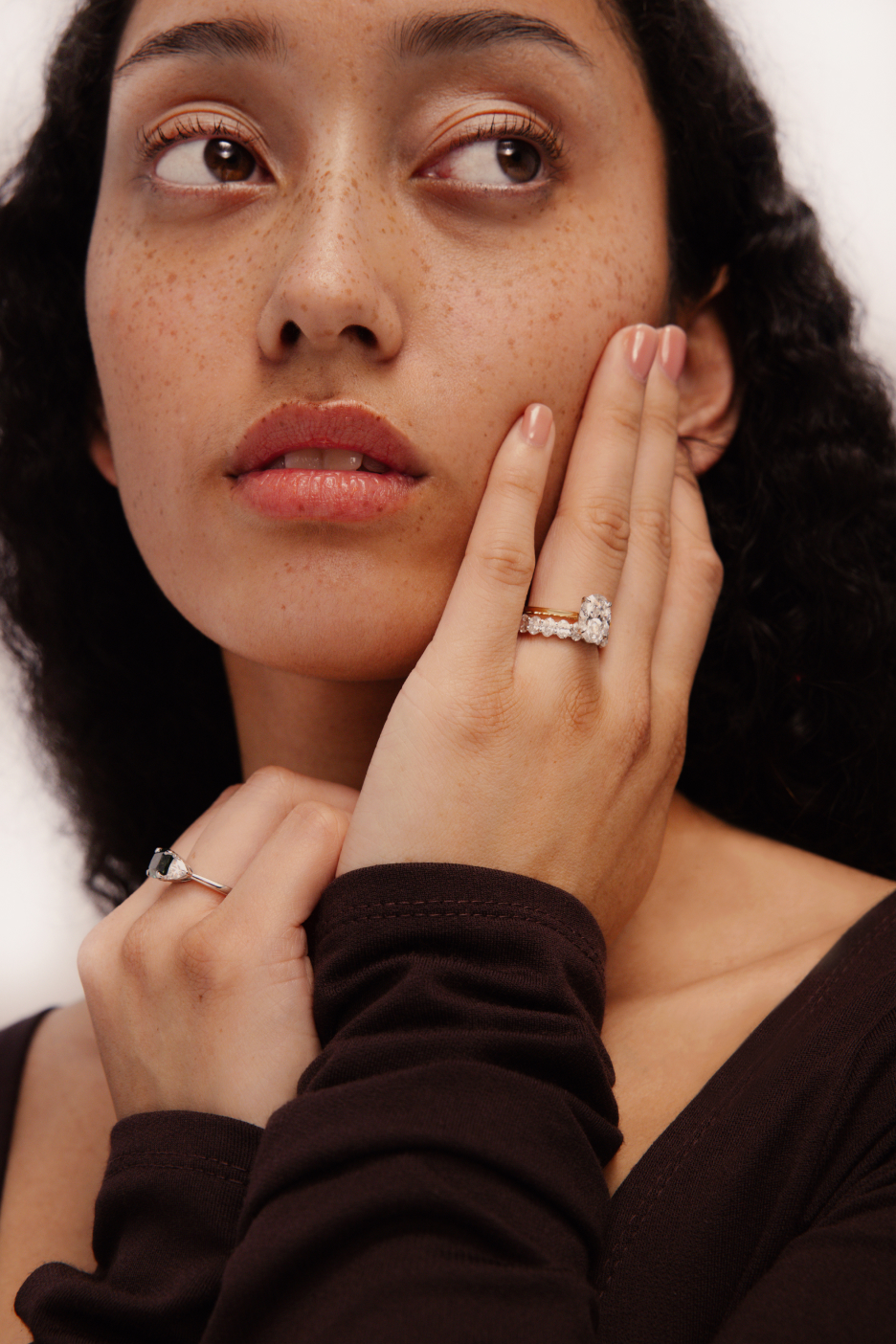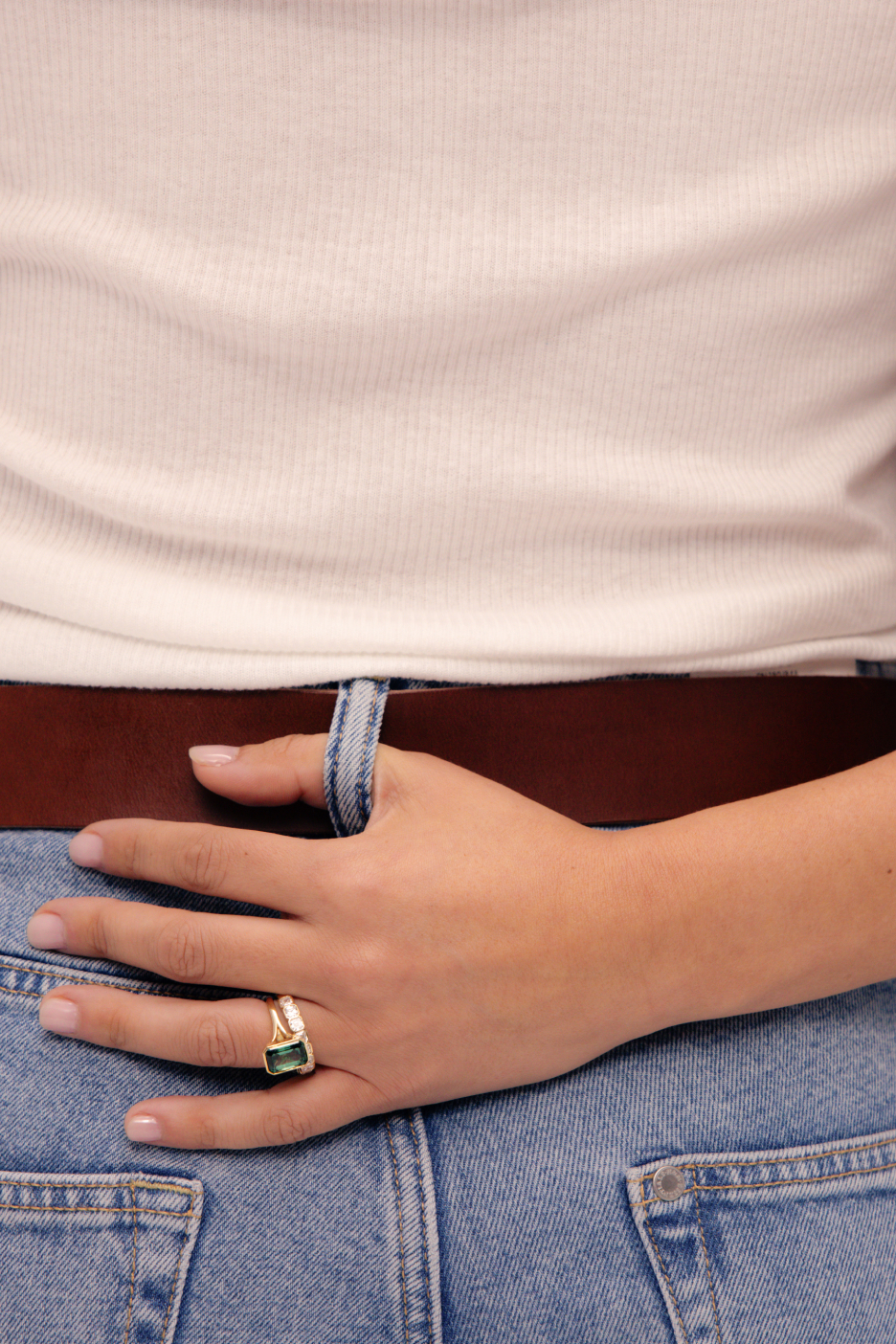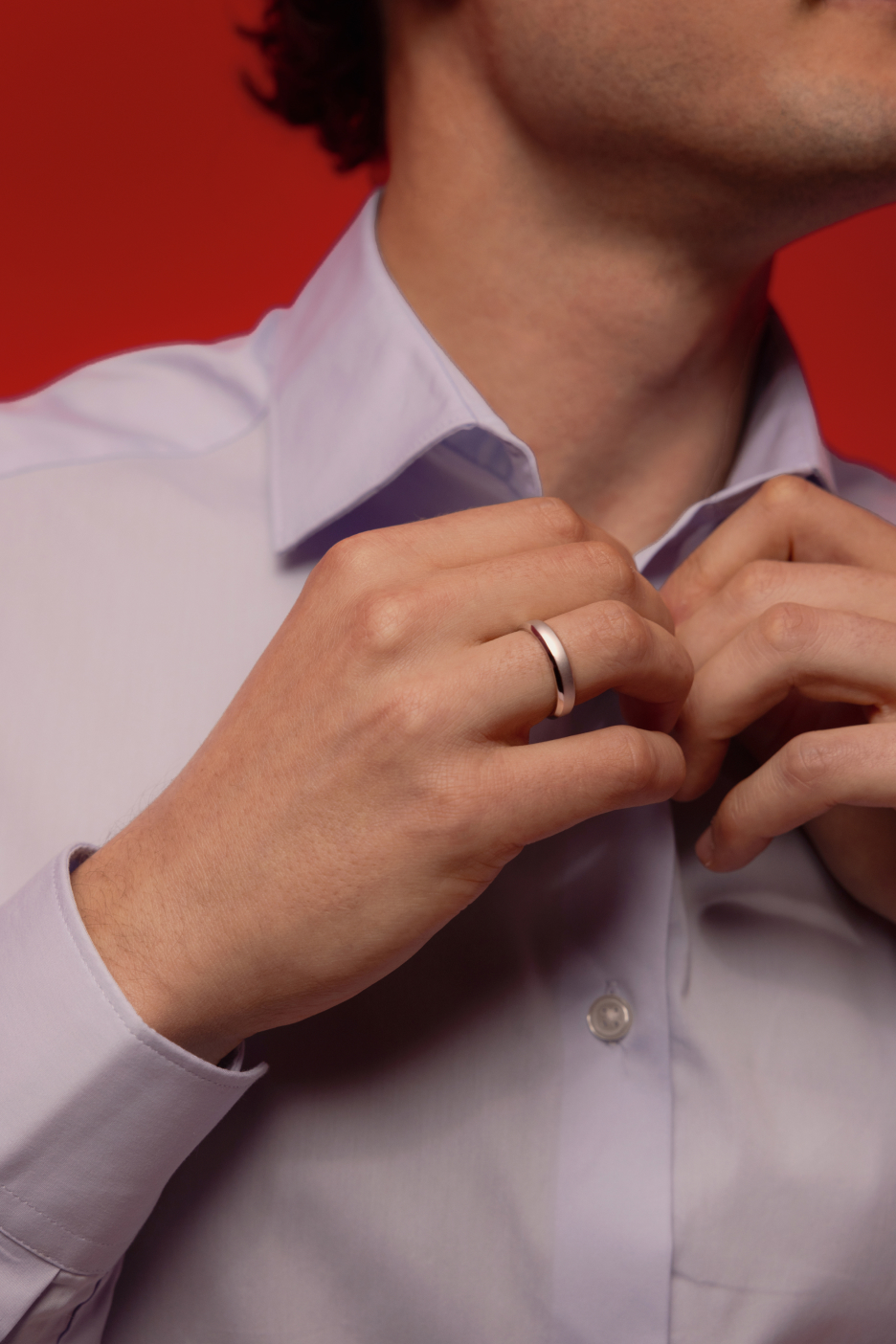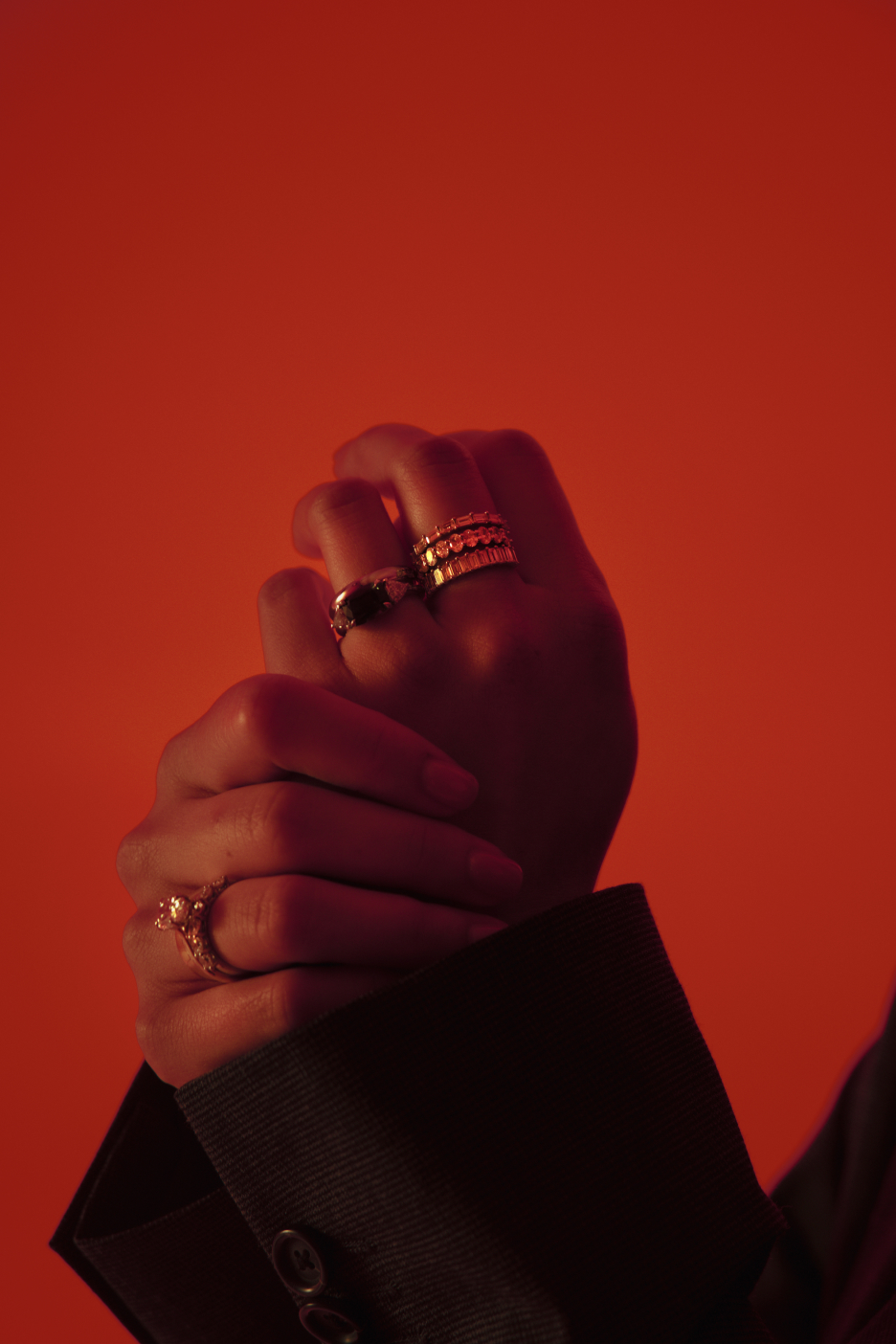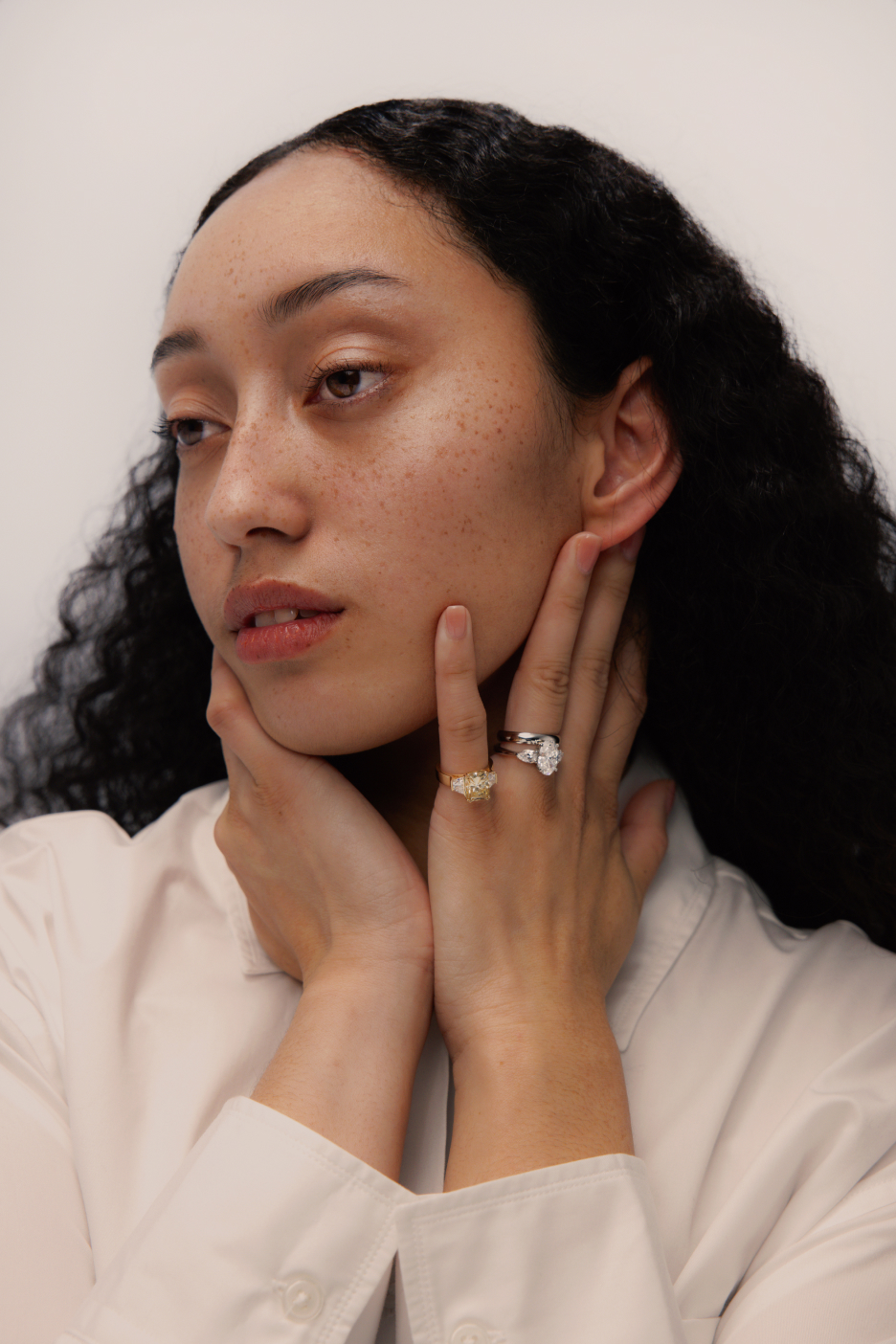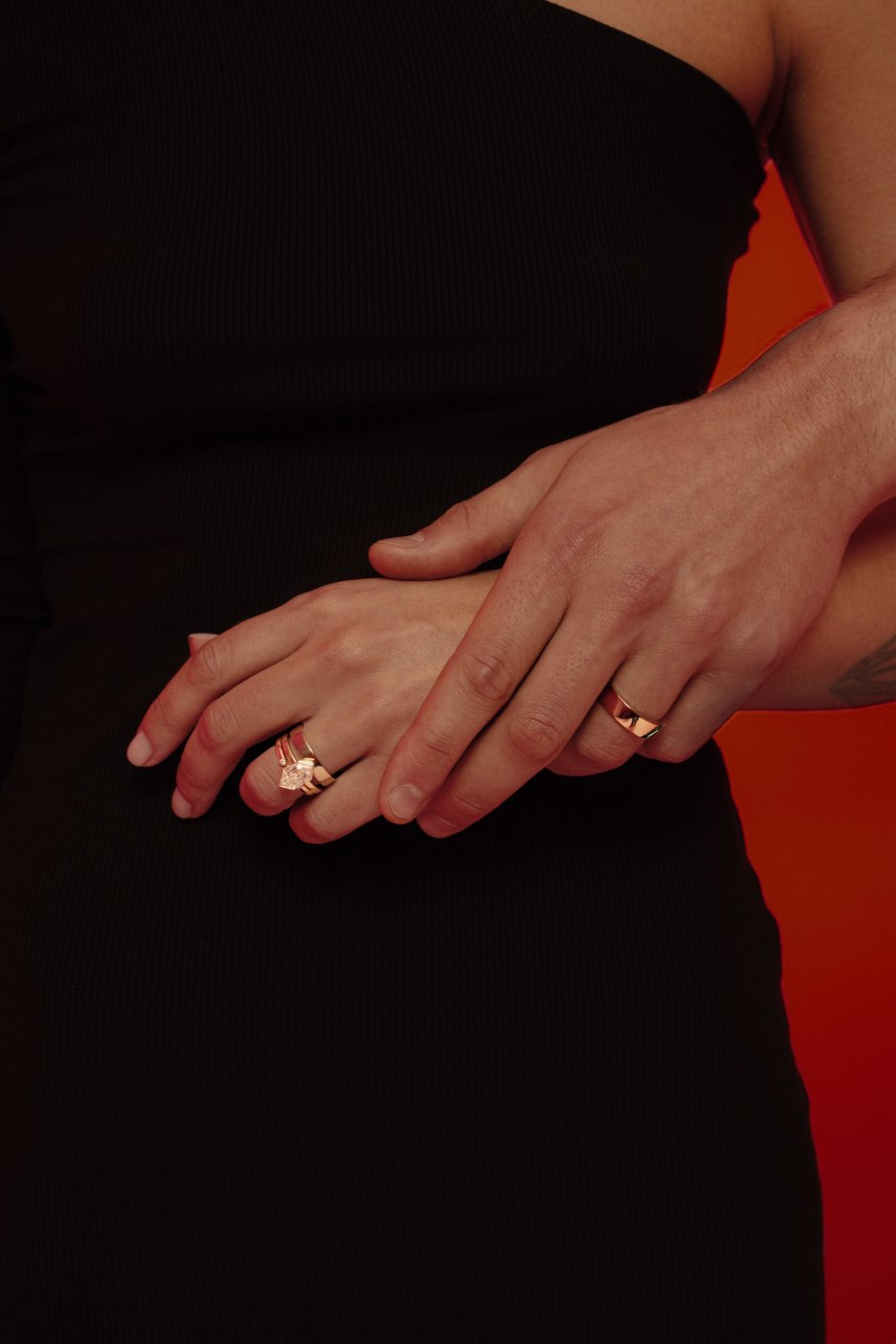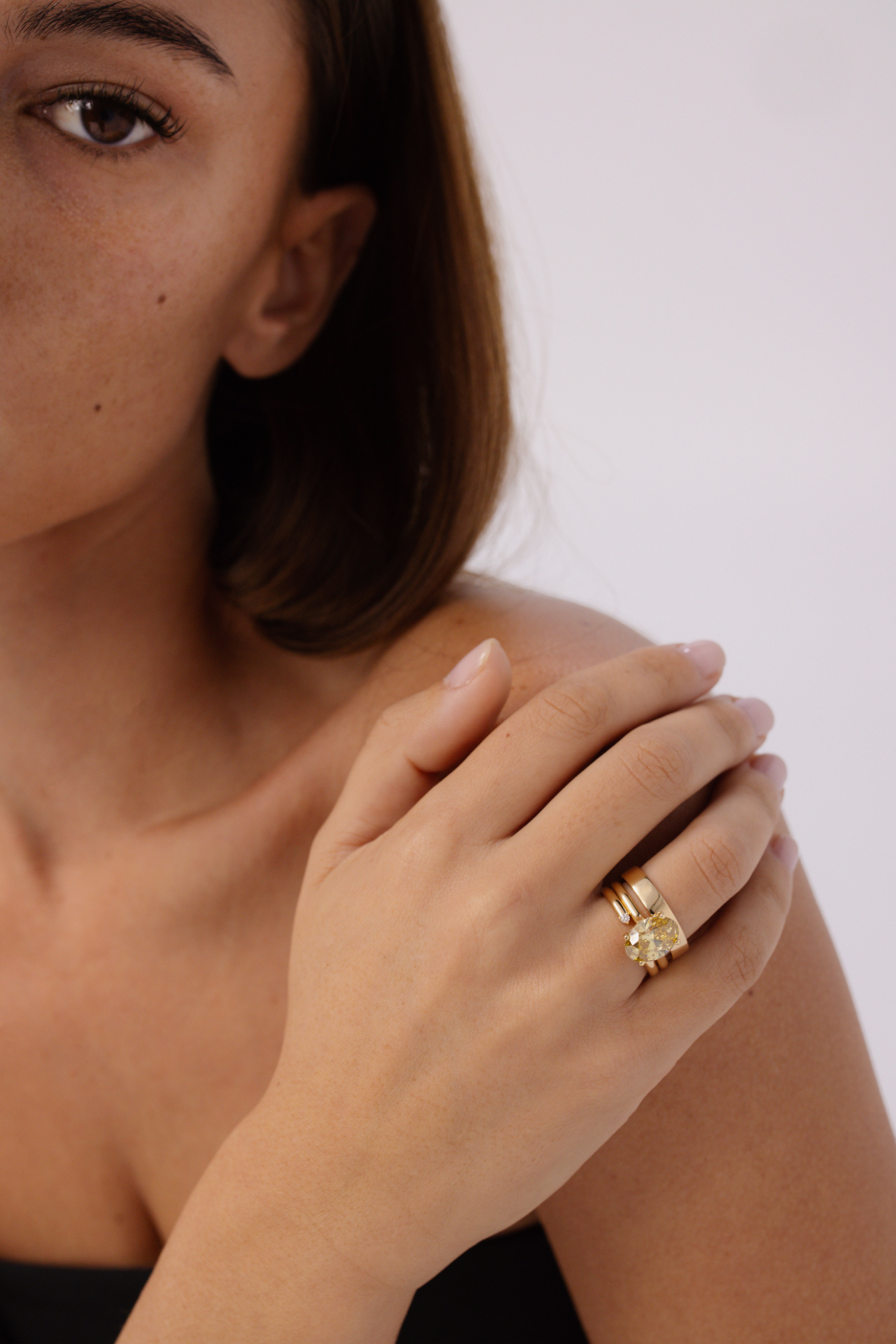How To Buy A Gold Engagement Ring in New Zealand

A gold engagement ring is the most common metal to hold your diamond or gemstone on your finger. But not all gold is high quality. This article will walk you through all the things you need to know before buying an engagement ring made out of gold.
What are the different types of gold?
Gold comes in different colours and different karats. Let’s start with karat.
Pure gold is 24 karats. You can’t get any more karat of gold. And anything below 24 karats is an alloy of gold. This means that there is another element that is mixed in with it.
For jewellery, 24-karat gold is too soft. This makes it too malleable, easy to scratch and easy to tarnish. It is for this reason that most jewellers work with either 9, 10, 14, 18 or 22-karat gold.
22-karat gold is traditionally used for plain jewellery, but it is too soft for holding gemstones, so most jewellers do not use this for engagement rings or wedding bands.
If you're already wearing gold jewellery, you can verify the karat of gold by looking at the stamp inside of the band – for example 18-karat will be stamped with 18K inside the band.
What karat of gold is the best for an engagement ring?
There is no “best” karat of gold. The general rule is that the lower the karat of gold, the cheaper the price for the band itself. But each karat has its pros and cons.
For example, 22 karat gold is very yellow; and the gold colour can fade at 9 karats depending on the other metals.
The most important thing that you need to pay attention to is not just karat, but what other metals are in the gold alloys.
Cheap jewellers try and sell poor-quality gold. This is gold that is often mixed with tin or other lower-quality gold to lower their costs. Not all 9 karat golds are the same. Neither are 10, 14, 18 or 22.
Ideally, you want a gold alloy that is hypoallergenic. And when you do, ensure that it doesn’t contain any nickel — it is the most common additive that makes gold an irritant.
Cheap gold is allergenic. This means that it can irritate your skin when you wear it. This is the type of gold you can expect from mall jewellers when you buy an engagement ring or a piece of jewellery for less than $4,000.
At Four Words, all our jewellery is hypoallergenic and nickel-free – no matter what karat of gold is used. The majority of our rings are made in 18 karat or 14 karat, with 14 karat being the most popular at the moment. But it isn’t uncommon for us to craft rings using 9k or 10k gold.
If you work with another jeweller, make sure to ask what type of metals are used in their alloys, and if their jewellery is hypoallergenic.
18 karat gold
18-karat gold contains 75% pure gold and 25% of another metal, normally a combination of silver and copper.
In some cultures, it is preferred to always pick the highest karat of gold. However, we like to approach our jewellery with which colour suits the aesthetic or design you’re after.
Because 18k gold contains more gold it will appear much more warmer than other karats. It is also a bit softer and likely to scratch more easily when compared with 14 or 10k gold.
14 karat gold
14-karat gold has a lower percentage of gold, roughly 58% pure gold with the remaining a mixture of other metals – usually silver, zinc and copper.
We recommend 14-karat gold, as it is harder and more durable than 18-karat gold meaning it's more likely to last longer. This can be useful for someone who has an active lifestyle and needs to be conscious about how they wear their ring.
The difference in colour between 14k and 18k can be quite subtle – it really comes down to what someone prefers. 14k yellow gold tends to be cooler, while 18k is generally warmer or more vibrant.
If you want to see the difference, we have a wide variety of samples in our Auckland showroom with rings ranging from 9k all the way to 18k.
10 karat gold
10k and 9k gold are the lowest alloys we work with in our fine jewellery at Four Words, containing 41.7% and 37.5% of gold respectively. It is the most cost-effective option if you’re on a tight budget and can be a handy way to save some money.
It also means it is the most durable option, as it is unlikely to bend, warp or scratch easily.
In terms of colour, 10k gold tends to be more “muted” – leaning towards a cooler or matte tone. Aesthetically, it can help compliment coloured stones or those with darker skin tones.
However, because it has other metal alloys in it (either silver or copper) there is a greater risk that it can tarnish or oxidise over time. This is where you need to be careful if working with other jewellers, as it can be more likely to be allergenic.
Below is a matching engagement ring set featuring two similar rings in 10K rose gold and another in 10K white gold – both with pink and purple sapphires.
Yellow gold
Yellow gold is the most common type of gold that is paired with a diamond or gemstone as part of an engagement ring. The key questions that you need to ask are about its hypoallergenic properties and how yellow the gold is. The higher the karat, the more yellow the gold can look. Higher karats can often look too yellow to the point it looks like fake gold, even though it’s not!
Work closely with your jeweller to show them what type of yellow you are specifically looking for.
We have done hundreds of yellow gold rings with a wide range of karats.
Below is a 1.0 carat Princess cut Moissanite, Kite set engagement ring, in yellow gold.
Another ring that we love is a three-stone emerald and diamond engagement ring in a 14k yellow gold band.
White gold
White gold is a popular option for someone wanting a “silver-looking” ring. However, we prefer recommending platinum instead.
White gold is plated with rhodium to provide it with a nice bright-white finish. It also is cheaper than platinum initially.
However, over time, the rhodium plating fades, meaning you need to get it re-plated every two to three years. This can cost around $50 - $100 NZD. Without this plating, it looks like a very pale-yellow-gold ring, which becomes more apparent as the plating fades.
So while platinum is a bit more expensive up front, you make your money back in spades because of the re-plating costs associated with white gold. Platinum is a lot more resistant to scratching than gold.
Below is a three-stone Emerald diamond engagement ring.
Rose gold
Rose gold is a mixture of gold and copper – which provides a vintage or “romantic” look. The copper content in rose gold provides a warm red hue. The higher the quantity of copper, the stronger the red hue becomes – with 18k leaning towards a light pink colour.
One myth with rose gold is that the colour fades over time, like white gold. But because the metal is not plated, it naturally will retain its lovely colour. This means it is low maintenance, just like yellow gold.
At Four Words we have done hundreds of rose gold bands — for both engagement and wedding rings.
Below is a side profile of a 1 carat lab-grown round diamond solitaire with pave diamonds that start off as white and tend pink, in a rose gold band.
Choose Your Band Colour Based On Your Skin Undertone
If you’re unsure about what band colour to pick, we recommend matching it based on your skin’s undertone. This is so the metal used compliments or contrasts you. This isn’t about the colour of your skin, but rather if you have a warm or cool undertone, based on the colour of your veins.
Those with cool undertones, tend to suit platinum or white gold. While Yellow or rose gold typically suits those with warm undertones.
- Those that a neutral in their undertone suit all colours.
- If you have blue or purple veins, then you have a cool undertone.
- If you have green-olive veins then you have a warm undertone.
- If you have blue-green veins then you have a neutral undertone.
Your Engagement Ring Band Colour Should Match Your Wedding Ring
Picking out your ring metal colour is as big a decision as you want to make it. Depending on the style you’re after you can go for matching bands or pick an unmatched style (for example using two different colours).
However, we often find most people prefer their engagement ring to match their wedding band. If you have the opportunity, we highly recommend you design your engagement ring at the same time as your wedding band so you can make an informed decision on what you want your bridal set to look like.
Below is a bridal set, with both the engagement ring and wedding band designed together. It features a storm grey spinel, with moissanite accent stones, set in 14k rose gold. The wedding band complements the engagement ring, with a tiara crown, also set in 14k rose gold. Both sit flush together.
One of our clients designed a full his and hers bridal collection for their engagement and wedding.
Her Ring: Her ring features an asymmetric cluster engagement ring, using a Pear shapped emerald gemstone. It also has diamond accent stones with a 14k yellow band. Her wedding band sits flush, with a channel set pavé band, also in 14k yellow gold.
His Ring: His wedding band compliments her bridal set, with an assymetyric Emerald in the centre of the band, also in 14k yellow gold.
How To Choose The Best Gold Engagement Ring
The best way to choose the best gold engagement ring in New Zealand is to design your own bespoke engagement ring. At Four Words, you can choose the diamond or gemstone, the shape of it, the basket and the metal for the band.
When you work with Four Words to design any piece of jewellery, you will work with our designers to create something classic but unique to you. And with unlimited design revisions, you can get it in exactly the way that you want.
FAQs
Where is Four Words located?
Four Words has one studio in Auckland, New Zealand but services all of New Zealand, Australia, the UK and US. We have had customers from all over New Zealand and around the world.
Do you do virtual consultations if I can’t get to Auckland?
Yes, we can do virtual consultations. If you reach out to us on our contact form, then we can schedule a time.
Can you work with gemstones like amethyst, aquamarine, garnet and morganite?
Yes! At Four Words we work with lab-grown diamonds and a wide range of gemstones so long as they are ethically sourced. Our preference is to use lab-grown diamonds and gemstones where available.
What is the cheapest engagement ring that you can do?
Our designers typically work with orders over $2000. For everything else you can choose from our collections. Reach out to our team if you have any questions.
